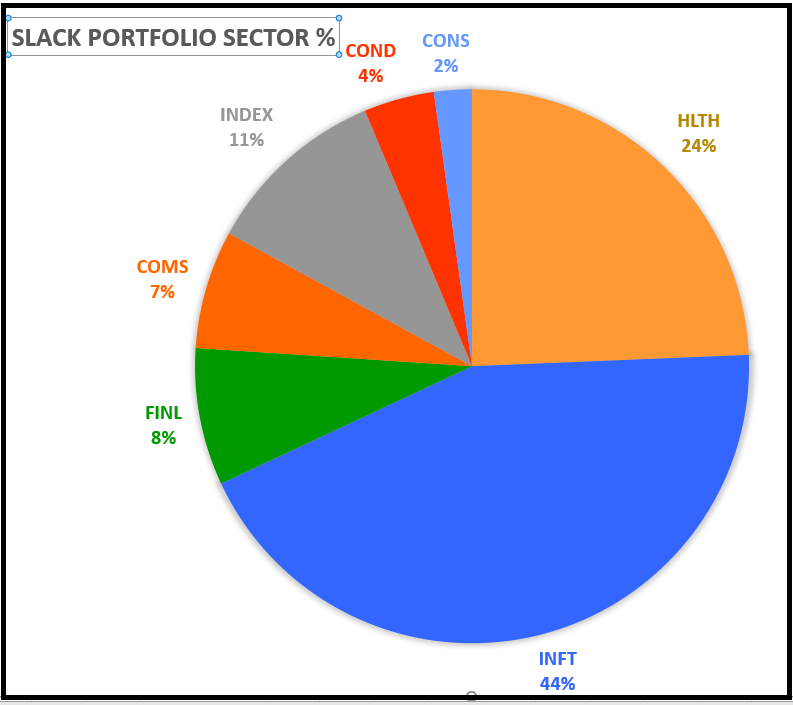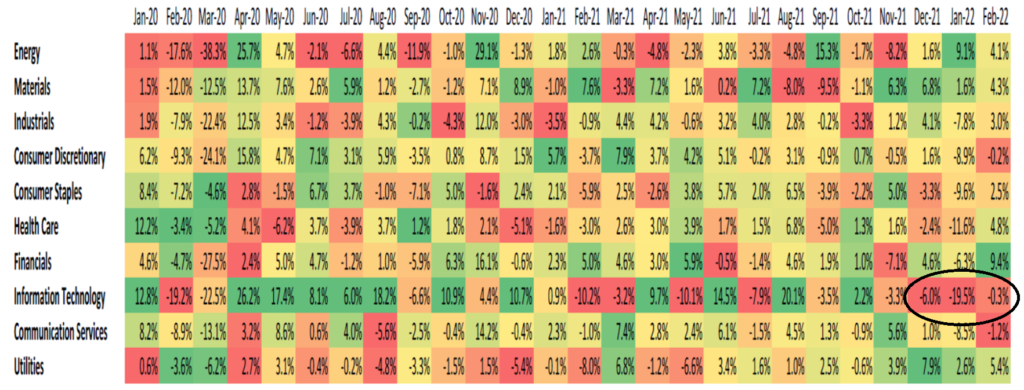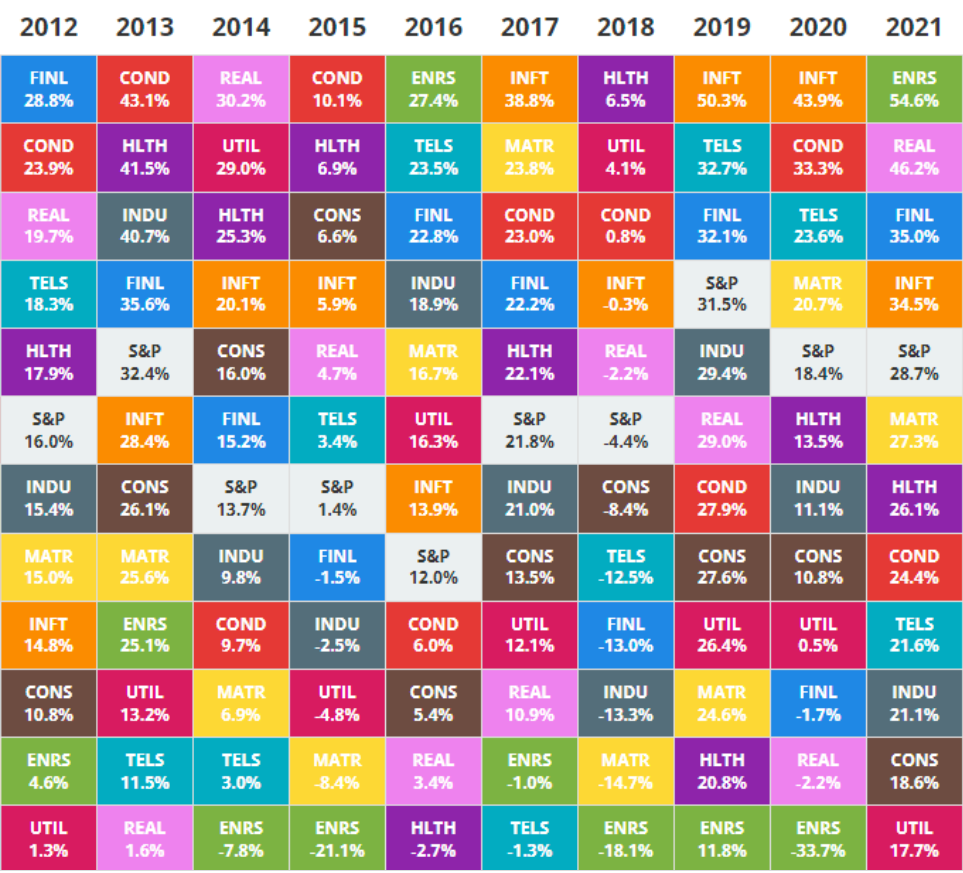
Slack Investor tries to diversify his investment risk by keep a 70% growth oriented investments portfolio with a 30% stable income portion. So far this financial year, my Investments portfolio performance has been a bit lacklustre – so I have gone to the “hall of mirrors” and had a long, hard look at myself. I decided to do a sector analysis of my investments portfolio. The biggest revelation is the large proportion of Investments in the Information Technology (INFT) and Healthcare (HLTH) sectors.

Both of my main sectors have had a rough time these last few months – as can be seen by the monthly sector performance chart below. Materials (Resources) and Energy have done well – But these are sectors that I do not own.

Slack Investor is not too old to learn new tricks … or, at least, evolve a little. so I was interested to see how my sector analysis compared with the US S&P 500 (below). I chose the S&P 500 f0r comparison as it not dominated by Financials and Resources like the ASX 200. My weightings are very different to the S&P 500.

Annual performance for each sector in the S&P 500
I came across a great graphic showing how each sector of the S&P 500 performs annually

Some explanation of this beautifully coloured quilt is in order. The vertical columns represent each of the last 10 years performance of each sector of the S&P 500 in ranked order. The right hand column is for 2021. The 2021 sector leader was Energy (ENRS) after a long period in the doldrums. Next is Real Estate (REAL), Financials (FINL), Information Technology (INFT), S&P 500 (S&P), Materials (MATR), Health (HLTH), Consumer Discretionary (COND), Communication Services (TELS), Industrials (INDU), Consumer Staples (CONS) and Utilities (UTIL). The full glory of this graphic is found on the Novel Investor website with a bit of interactivity.
Some things that I have gleaned from this graphic
- Every dog has its day – Depending on the year, each sector can have it’s day in the sunshine.
- If you want neither the best of returns or the worst sector returns – buy the S&P 500 Index.
- Often … if a sector tops the rankings in one year, it usually performs much worse in the next year.
- The Information Technology (INFT) sector, to which Slack Investor is heavily exposed, is in the top four rankings for performance for 7 of the last 10 years. This year is not one of them.
Should I change my sector allocation?
There are good arguments for passive investing and, if I did not enjoy investing in individual companies, and my 5-yr results were not OK), then that is what I would do. To completely diversify my investment portfolio to match the S&P 500 would mean that I would be investing solely in an S&P 500 Index fund. This has been an excellent idea for the past 50 years.
Berkshire Hathaway has tracked S&P 500 data back to 1965. According to the company’s data, the compounded annual gain in the S&P 500 between 1965 and 2020 was 10.2%
From businessinsider.com
However, Slack Investor still thinks that the S&P 500 is over valued. Regardless of the current cycle, to invest in the whole index would be lumbering my portfolio with some cyclical and low growth companies.
I will continue to skew my investments portfolio with growing businesses – regardless of which sector they are in. I will not always get the company selection right – and will suffer the occasional whack. That’s fine, as long as I get it “mostly right”.
At the moment, many of the high P/E, growing businesses that Slack Investor owns are being sold down as analysts adjust down future earnings because of anticipated inflation. But the companies I own were usually selected for their ability to set their own prices and increase their earnings … these are the qualities of businesses that will prevail – regardless of short-term fluctuations.
